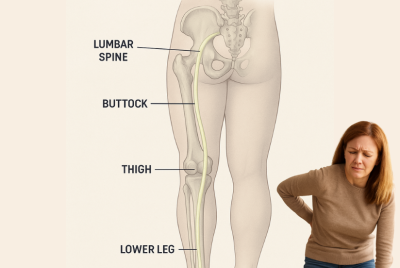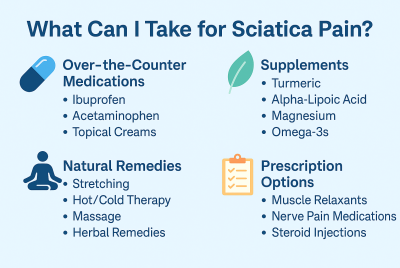Long Drive Tips for Sciatica Sufferers: How to Travel Without the Pain
Introduction: Why Long Drives Feel Like Torture with Sciatica
If you suffer from sciatica, you know that sitting for too long can feel like torture. The sharp, burning, or radiating pain down your leg often makes even short commutes uncomfortable—so the thought of a long road trip may seem impossible. But here’s the good news: with the right strategies, you can make long drives much more manageable. This guide shares practical long drive tips for sciatica sufferers, helping you enjoy road trips without being sidelined by pain.
Sciatica sufferers commonly experience:
-
Lower back pain and stiffness
-
Numbness or tingling in the legs
-
Weakness while standing or walking
-
Difficulty sitting for extended periods
Understanding Why Driving Triggers Sciatica Pain
Driving can worsen sciatica because of:
-
Prolonged sitting – Sitting puts pressure on the lower spine and sciatic nerve.
-
Poor posture – Slouching or leaning can increase nerve compression.
-
Vibration from the car seat – Constant road vibration irritates the lower back.
-
Limited movement – Staying in one position too long reduces circulation.
Knowing these triggers is the first step toward finding relief.
Seat Setup: Your First Defense Against Sciatica Flare-Ups
Proper seat adjustments can make or break your comfort. Try these tips:
-
Adjust seat height so your hips are slightly higher than your knees.
-
Use lumbar support (a cushion, pillow, or built-in car feature) to reduce lower back stress.
-
Tilt the seat back slightly (100–110 degrees) instead of sitting bolt upright.
-
Bring the steering wheel closer to avoid leaning forward.
-
Sit evenly with weight balanced on both hips.
👉 Pro Tip: Many U.S. drivers find relief with orthopedic seat cushions like the Everlasting Comfort cushion available online.
Long Drive Tips for Sciatica Sufferers: Movement Is Key
Staying still is the enemy of sciatica relief. Instead:
Take Frequent Breaks
-
Stop every 45–60 minutes.
-
Get out, stretch, and walk for 5 minutes.
-
Use rest stops, gas stations, or safe pull-over areas.
Do Simple Stretches During Breaks
-
Hamstring stretch: Place your heel on a curb, lean forward gently.
-
Knee-to-chest stretch: Lying down on a mat or standing with support.
-
Piriformis stretch: Cross one ankle over the opposite knee and lean forward.
Best Driving Accessories for Sciatica Pain Relief
Investing in the right gear can make long drives less painful:
-
Lumbar support pillow – Keeps spine aligned.
-
Gel seat cushion – Reduces pressure on hips and tailbone.
-
Portable heating pad – Provides soothing warmth for tight muscles.
-
Massage seat cover – Helps reduce stiffness during long trips.
These simple tools can transform driving from miserable to manageable.
Heat or Ice: Which Works Best While Driving?
-
Heat therapy is often more practical during long drives. A portable heating pad or heated seat cover relaxes muscles and reduces stiffness.
-
Ice packs are helpful for flare-ups, but can be harder to manage on the road. Consider instant cold packs you can keep in the glove box.
Practical Long Drive Tips for Sciatica Sufferers
Here’s a quick checklist to keep in your car:
-
Stretch before leaving – Warm up your muscles.
-
Pack cushions – For lumbar and seat support.
-
Dress comfortably – Avoid tight waistbands.
-
Stay hydrated – Dehydration worsens muscle tension.
-
Alternate heat and movement – Use breaks to walk and stretch.
-
Plan your route – Choose stops where you can move around.
Lifestyle and Exercise: Preventing Sciatica Flare-Ups Before Travel
Daily habits play a significant role in sciatica pain relief. Before a long trip, consider:
-
Strengthening exercises – Focus on your core, glutes, and lower back.
-
Sciatica stretches at home – Daily hamstring, piriformis, and hip stretches.
-
Physical therapy – U.S. guidelines often recommend PT as first-line treatment.
-
Posture training – Practice good sitting and standing alignment.
Common Mistakes to Avoid on Long Drives with Sciatica
-
Ignoring early signs of pain.
-
Sitting for more than 90 minutes without a break.
-
Leaning forward toward the wheel.
-
Driving with items in your back pocket (like a wallet).
-
Skipping hydration (leading to stiff muscles).
Real-Life Coping Strategies from Sciatica Sufferers
Many U.S. drivers with sciatica share similar success stories:
-
Mike, 42, from Texas: Swears by stopping every 50 miles and doing a quick walk.
-
Sarah, 36, from California: Uses a heating pad and lumbar pillow together for relief.
-
James, 55, from Florida: Avoids caffeine-heavy energy drinks before long trips, since dehydration worsens his lower back pain and sciatica.
When to See a Doctor
While these long drive tips for sciatica sufferers can make traveling more comfortable, it’s essential to know when your pain requires medical attention. Driving discomfort should not be ignored if:
-
Your sciatica pain is severe or worsening, even after rest and home remedies.
-
You experience numbness, tingling, or weakness in your legs or feet that affects driving safety.
-
The pain interferes with daily activities, such as sitting, walking, or sleeping.
-
You lose control of your bladder or bowels (a rare but serious emergency).
-
Home treatments and lifestyle changes provide little to no relief after several weeks.
In the U.S., many people find relief by visiting a primary care physician, physical therapist, or spine specialist who can recommend tailored treatments. Depending on the cause—whether it’s a herniated disc, piriformis syndrome, or another condition—you may benefit from physical therapy, imaging tests, or other medical options.
FAQs About Long Drives and Sciatica
1. Is it bad to drive long distances with sciatica?
Not necessarily. With proper seat support, breaks, and stretches, many people manage long drives without worsening their pain.
2. What is the best sitting position for driving with sciatica?
Sit with hips slightly above knees, lumbar supported, and back at a 100–110 degree recline.
3. Can driving make sciatica worse?
Yes—prolonged sitting and poor posture can worsen sciatic nerve compression. That’s why breaks and seat cushions are essential.
4. How do I stop sciatica pain while driving?
Use lumbar support, shift positions often, apply heat, and stop for stretching breaks.
5. Are there special car seats for sciatica sufferers?
Yes—some U.S. brands like Tempur-Pedic and orthopedic seat cushions are designed specifically for lower back support.
6. Should I drive if my sciatica pain is severe?
If pain limits your ability to move your foot or focus safely, avoid driving until symptoms improve.
7. Can exercise help prevent driving pain from sciatica?
Absolutely—strengthening your core, hips, and back muscles reduces flare-ups during long trips.
Conclusion: Drive Smarter, Not Harder
Living with sciatica doesn’t mean giving up road trips or long drives. By combining seat adjustments, movement, stretching, and supportive accessories, you can make driving more comfortable and less painful.
Remember: your journey doesn’t have to be dominated by nerve pain. Use these long drive tips for sciatica sufferers to stay mobile, reduce flare-ups, and keep enjoying the freedom of the open road.
Disclaimer
This article is for educational purposes only and should not replace professional medical advice. Always consult a licensed healthcare provider before beginning any treatment plan for sciatica.
👉 Explore more:





